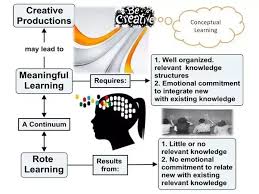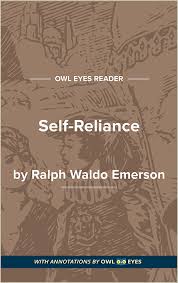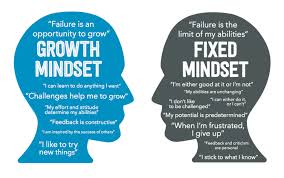Introduction
Revamping Outdated Teaching Methods In the ever-evolving landscape of education, teaching methods must adapt to prepare students for the future. Yet, some outdated methods linger, hindering progress and student engagement. It’s time to shine a light on these antiquated practices and explore how we can revamp them to better suit the needs of today’s learners. This article will delve into various outdated teaching methods, why they need a revamp, and how we can refine them to create a more effective and dynamic educational experience.
The Lecture-Only Approach

The Monologue of Knowledge
Lectures have been a staple of education for centuries. While they can effectively deliver information, relying solely on lectures can lead to disengagement and passive learning. Students often become mere spectators rather than active participants in their education.
Interactive Alternatives
To revamp the lecture-only approach, incorporating interactive elements such as discussions, group activities, and multimedia presentations can foster a more engaging learning environment. Encouraging student participation and critical thinking transforms the classroom from a monologue into a dynamic exchange of ideas.
Rote Memorization

The Drill-and-Kill Method
Rote memorization, or learning through repetition, has long been used to teach facts and figures. While it can help with short-term retention, it often fails to promote deep understanding or critical thinking skills. Students may remember information for a test but struggle to apply it in real-world situations.
Promoting Understanding
To move beyond rote memorization, educators can focus on teaching concepts and problem-solving skills. Using real-life examples, project-based learning, and hands-on activities can help students grasp the underlying principles and apply their knowledge creatively.
Standardized Testing
The One-Size-Fits-All Fallacy
Standardized tests are often used to measure student performance and compare educational outcomes. However, they can create a narrow focus on test preparation rather than holistic learning. Students with diverse learning styles and abilities may be unfairly assessed by a one-size-fits-all approach.
Diversified Assessment
To refine assessment methods, educators can incorporate a variety of evaluation techniques such as portfolios, presentations, and peer reviews. These alternatives provide a more comprehensive view of student abilities and encourage diverse talents.
The Sage on the Stage
The Teacher-Centric Model
The traditional teacher-centric model positions the teacher as the primary source of knowledge, with students passively receiving information. This method can limit student autonomy and creativity, stifling the development of independent thinking skills.
Facilitator of Learning
To revamp this model, educators can adopt a student-centered approach where the teacher acts as a facilitator of learning. Encouraging inquiry-based learning, where students explore topics through questions and research, can foster a more active and engaging classroom experience.
Also Read To Eat or Not to Eat: What Happens When You Ignore Hunger Cues?
Textbook Reliance

The Heavy Burden
Textbooks have long been the cornerstone of curriculum delivery. However, an overreliance on textbooks can lead to a rigid and monotonous learning experience. Textbooks may also become outdated quickly, failing to reflect current knowledge and developments.
Embracing Digital Resources
Incorporating digital resources such as online articles, videos, and interactive simulations can provide a more dynamic and up-to-date learning experience. These resources can be easily updated and tailored to student interests and needs.
The Homework Overload
The Stress Factor
Excessive homework can lead to student burnout and reduce the time available for extracurricular activities and family interactions. While homework can reinforce learning, an overload can have negative effects on student well-being.
Balanced Assignments
To refine homework practices, educators can assign meaningful and manageable tasks that reinforce classroom learning without overwhelming students. Encouraging project-based assignments that promote critical thinking and creativity can make homework more engaging and beneficial.
The Quiet Classroom
The Silent Treatment
A quiet classroom is often seen as a sign of good discipline, but it can also stifle student expression and collaboration. Encouraging silence can inhibit the development of communication and teamwork skills.
Encouraging Collaboration
To create a more vibrant learning environment, educators can foster collaborative activities such as group projects, discussions, and peer tutoring. Promoting a culture of open communication and teamwork can enhance learning and social skills.
The Punitive Discipline Approach
The Fear Factor
Traditional punitive discipline methods, such as detention and suspension, aim to enforce compliance through fear. However, these approaches can damage student-teacher relationships and fail to address the underlying causes of behavior issues.
Positive Discipline
Adopting positive discipline strategies, such as restorative practices and social-emotional learning, can create a more supportive and respectful school environment. Focusing on conflict resolution and empathy-building helps students develop self-regulation and interpersonal skills.
The Fixed Mindset

Limiting Potential
A fixed mindset, where students believe their abilities are static and unchangeable, can limit academic growth and resilience. This mindset often arises from traditional grading practices and fixed expectations.
Cultivating a Growth Mindset
To promote a growth mindset, educators can emphasize effort, perseverance, and the value of learning from mistakes. Providing opportunities for students to set goals, reflect on their progress, and celebrate their achievements fosters a positive attitude toward learning.
The Segregated Subjects
The Compartmentalization of Knowledge
Traditional education often segregates subjects into distinct categories, limiting interdisciplinary learning. This compartmentalization can prevent students from seeing the connections between different fields of study.
Integrative Learning
Integrative learning approaches, such as STEAM (Science, Technology, Engineering, Arts, and Mathematics) education, promote the integration of multiple disciplines. Encouraging students to draw connections between subjects can enhance their understanding and foster innovation.
The Neglect of Soft Skills
The Focus on Academics
Traditional education tends to prioritize academic achievement over the development of soft skills such as communication, collaboration, and emotional intelligence. These skills are essential for success in the modern workplace and personal relationships.
Holistic Education
To address this gap, educators can incorporate social-emotional learning and opportunities for developing soft skills into the curriculum. Activities such as group projects, public speaking, and community service can help students build essential life skills.
The Teacher’s Desk
The Barrier
The physical layout of the classroom, with the teacher’s desk positioned at the front, can create a barrier between the teacher and students. This setup reinforces a hierarchical dynamic that can inhibit open communication.
Flexible Seating
Adopting flexible seating arrangements, such as group tables and collaborative spaces, can create a more inclusive and interactive classroom environment. Removing physical barriers encourages more meaningful interactions between teachers and students.
The Traditional Grading System
The Pressure Cooker
Traditional grading systems, with their emphasis on letter grades and standardized assessments, can create a high-pressure environment for students. This focus on grades can lead to anxiety, competition, and a narrow definition of success.
Alternative Assessments
To refine grading practices, educators can explore alternative assessment methods such as competency-based grading, narrative feedback, and self-assessment. These approaches provide a more comprehensive and holistic view of student learning and development.
The Lack of Student Choice
The One-Size-Fits-All Curriculum
A rigid, standardized curriculum can limit student choice and engagement. When students have little control over their learning, they may feel disconnected and disengaged from the educational process.
Personalized Learning
To enhance student engagement, educators can provide opportunities for personalized learning. Allowing students to choose topics of interest, set their own learning goals, and work at their own pace can foster a sense of ownership and motivation.
Conclusion
Revamping outdated teaching methods is essential for creating a more effective, engaging, and relevant educational experience. By embracing interactive learning, promoting understanding over memorization, diversifying assessment methods, and fostering a supportive and inclusive environment, educators can better prepare students for the challenges of the future. As we refine our approach to teaching, we must remain open to innovation and committed to meeting the diverse needs of all learners.
FAQs
1. Why is the lecture-only approach outdated?
The lecture-only approach is outdated because it often leads to passive learning and disengagement. Incorporating interactive elements such as discussions and group activities can create a more dynamic and engaging learning environment.
2. How can we move beyond rote memorization in education?
Moving beyond rote memorization involves focusing on teaching concepts and problem-solving skills. Using real-life examples, project-based learning, and hands-on activities can help students understand and apply their knowledge creatively.
3. What are the drawbacks of standardized testing?
Standardized testing can create a narrow focus on test preparation and may not accurately assess diverse learning styles and abilities. Incorporating alternative evaluation methods such as portfolios and presentations can provide a more comprehensive view of student performance.
4. How can flexible seating improve the classroom environment?
Flexible seating arrangements, such as group tables and collaborative spaces, can create a more inclusive and interactive classroom environment. Removing physical barriers encourages meaningful interactions between teachers and students.
5. Why is it important to incorporate soft skills into the curriculum?
Incorporating soft skills into the curriculum is important because these skills, such as communication, collaboration, and emotional intelligence, are essential for success in the modern workplace and personal relationships. Activities that develop soft skills help students build essential life skills.


